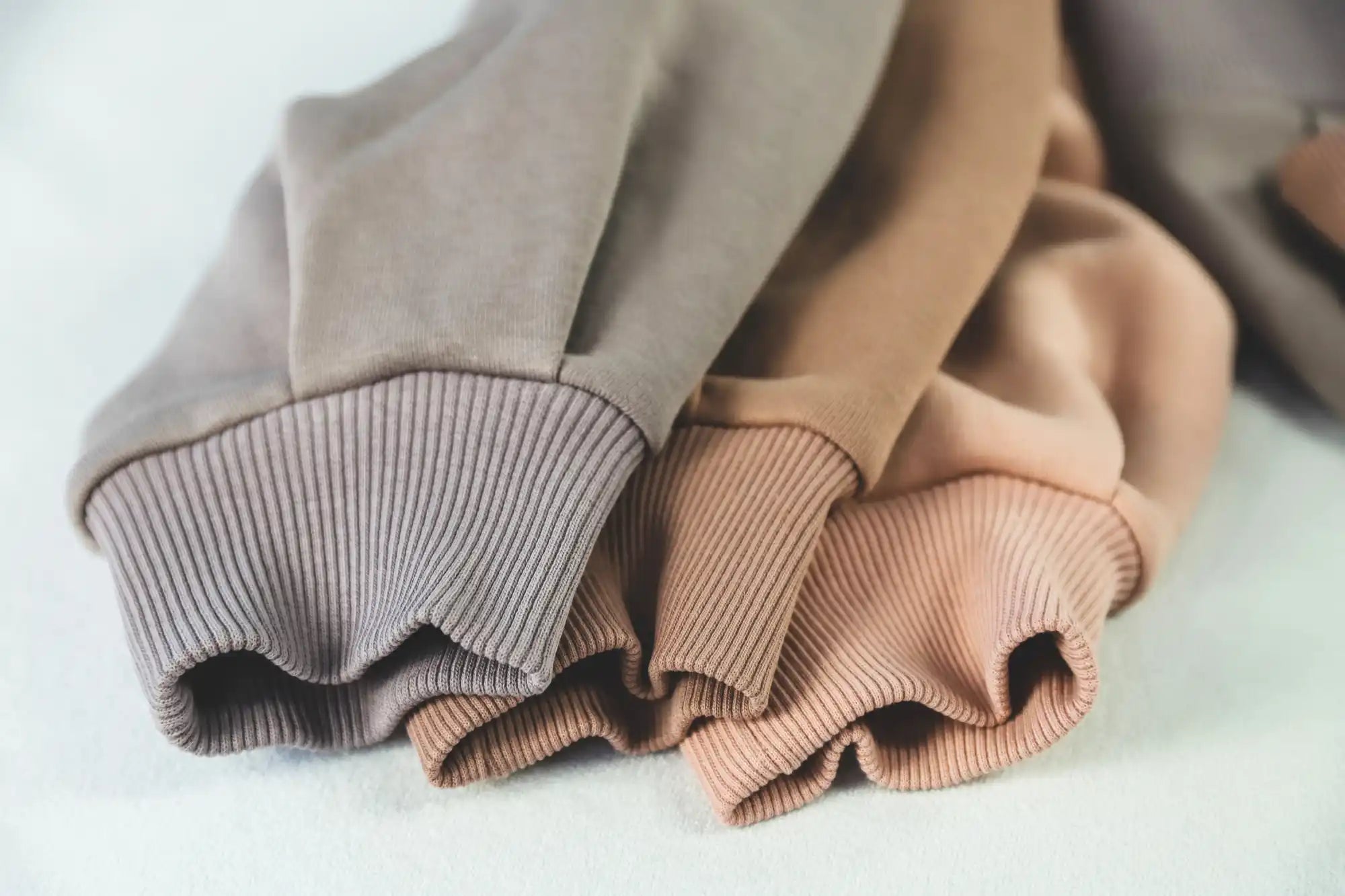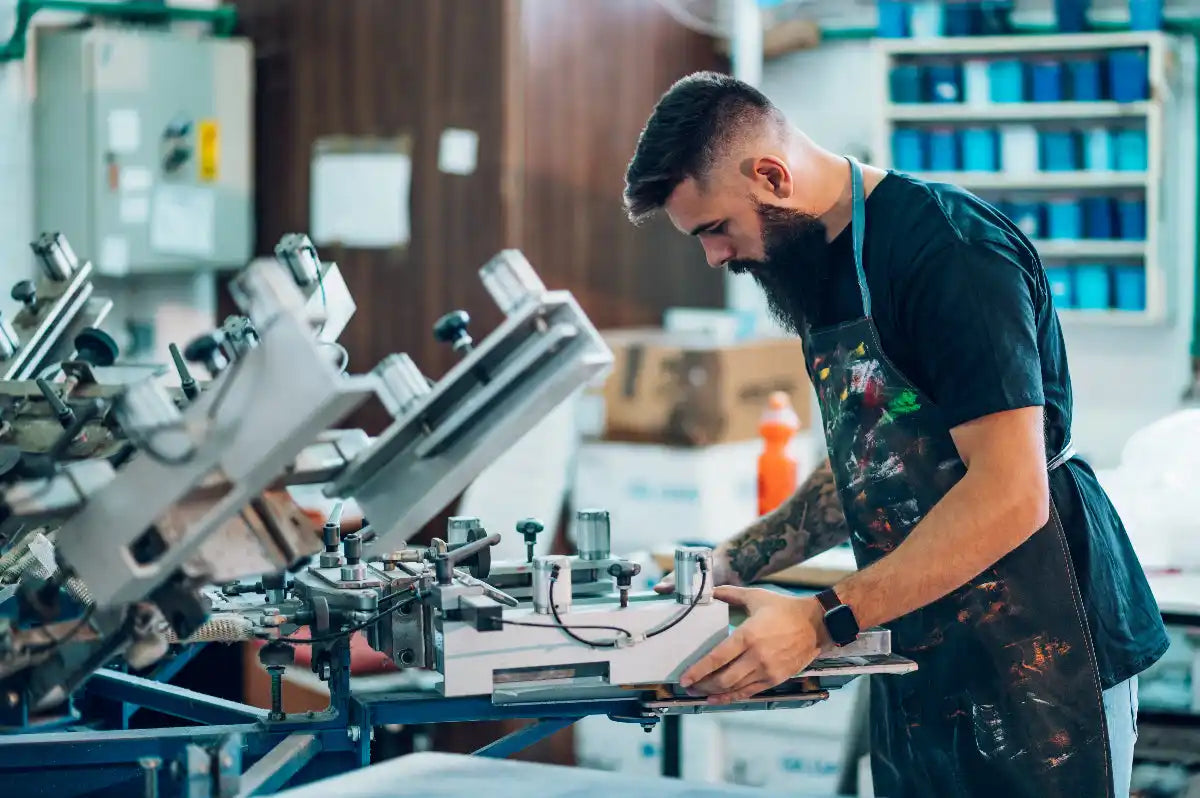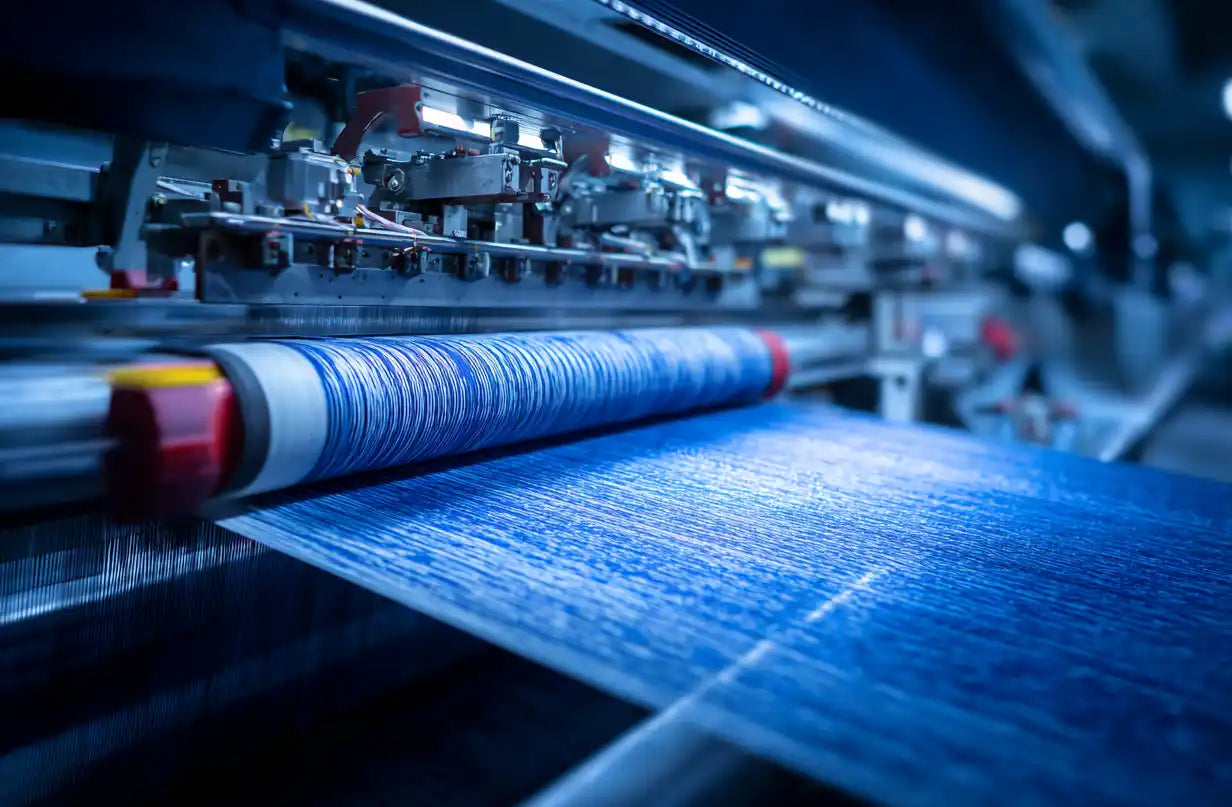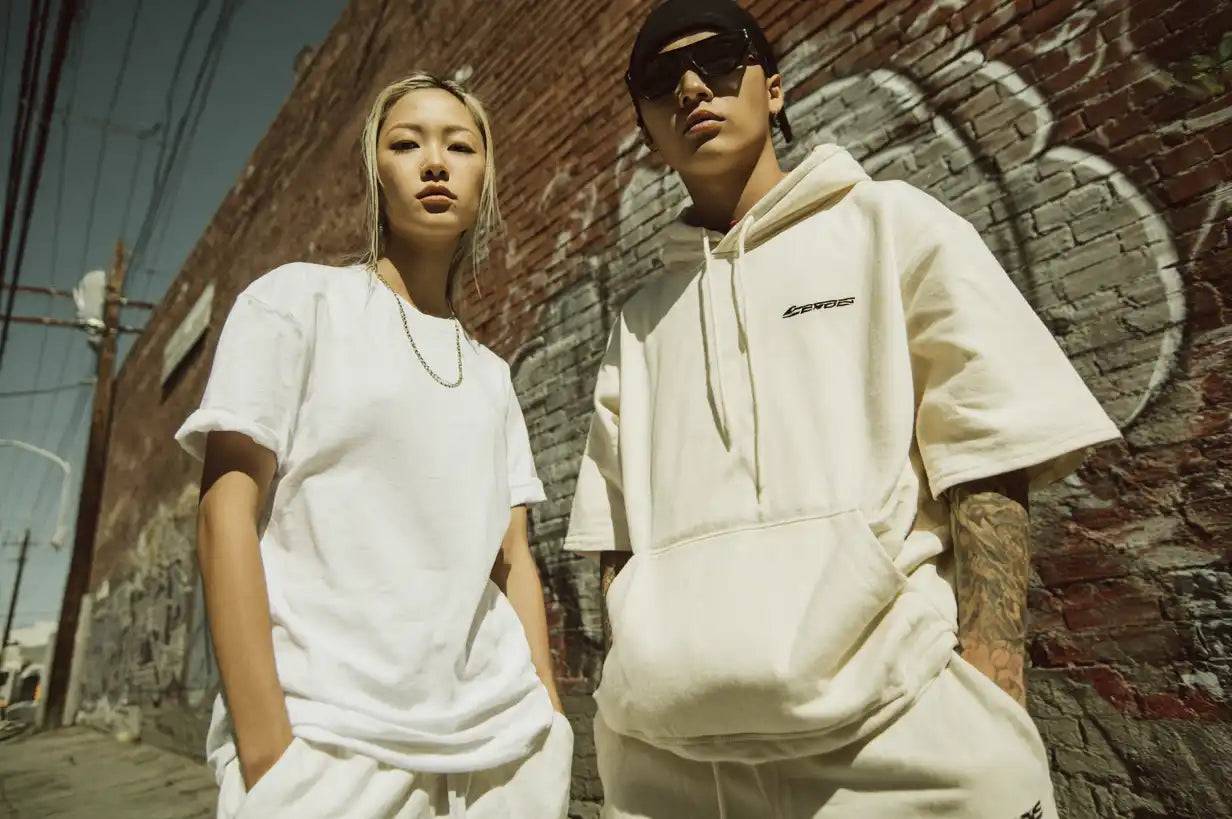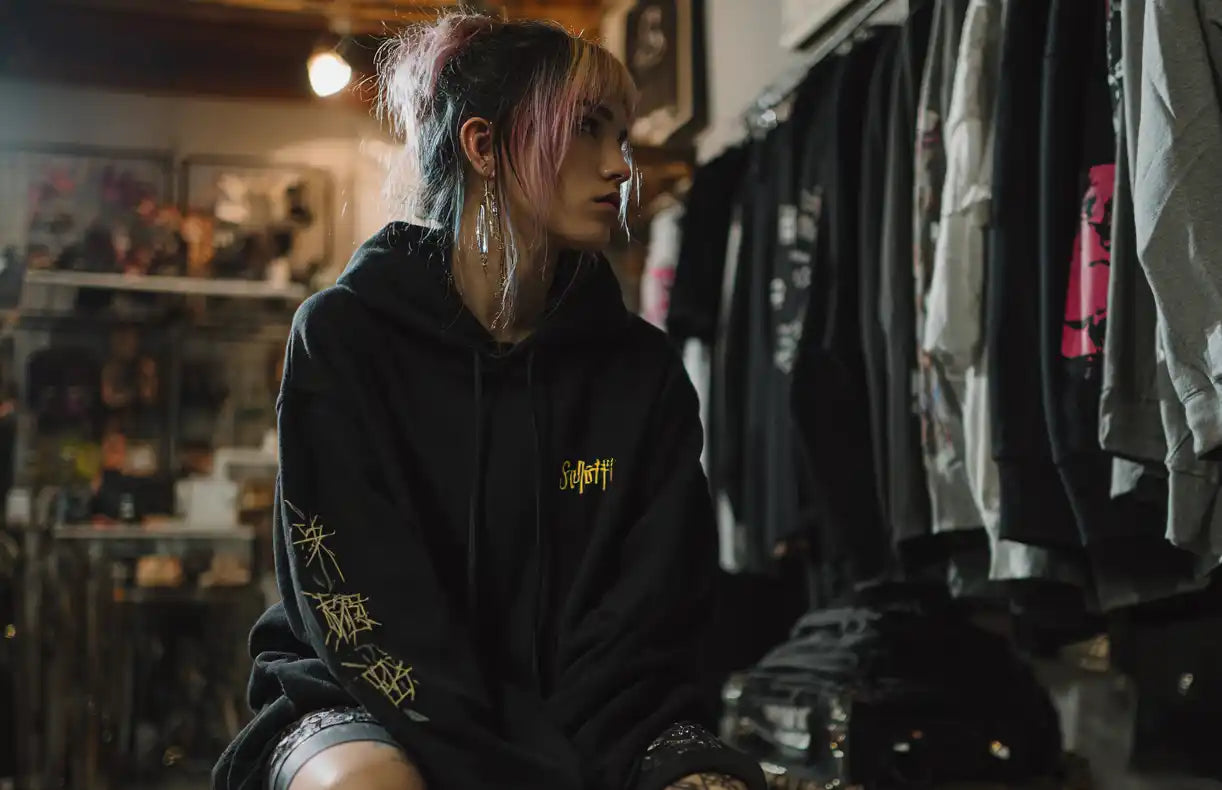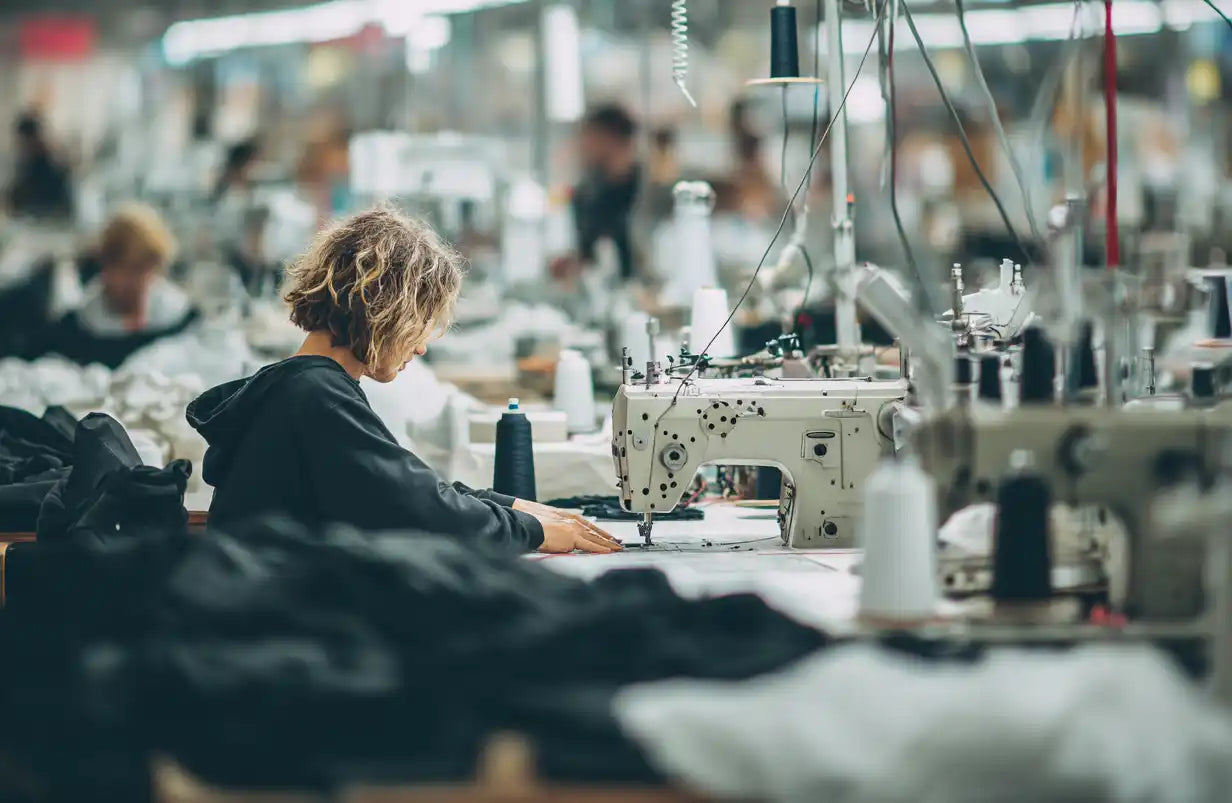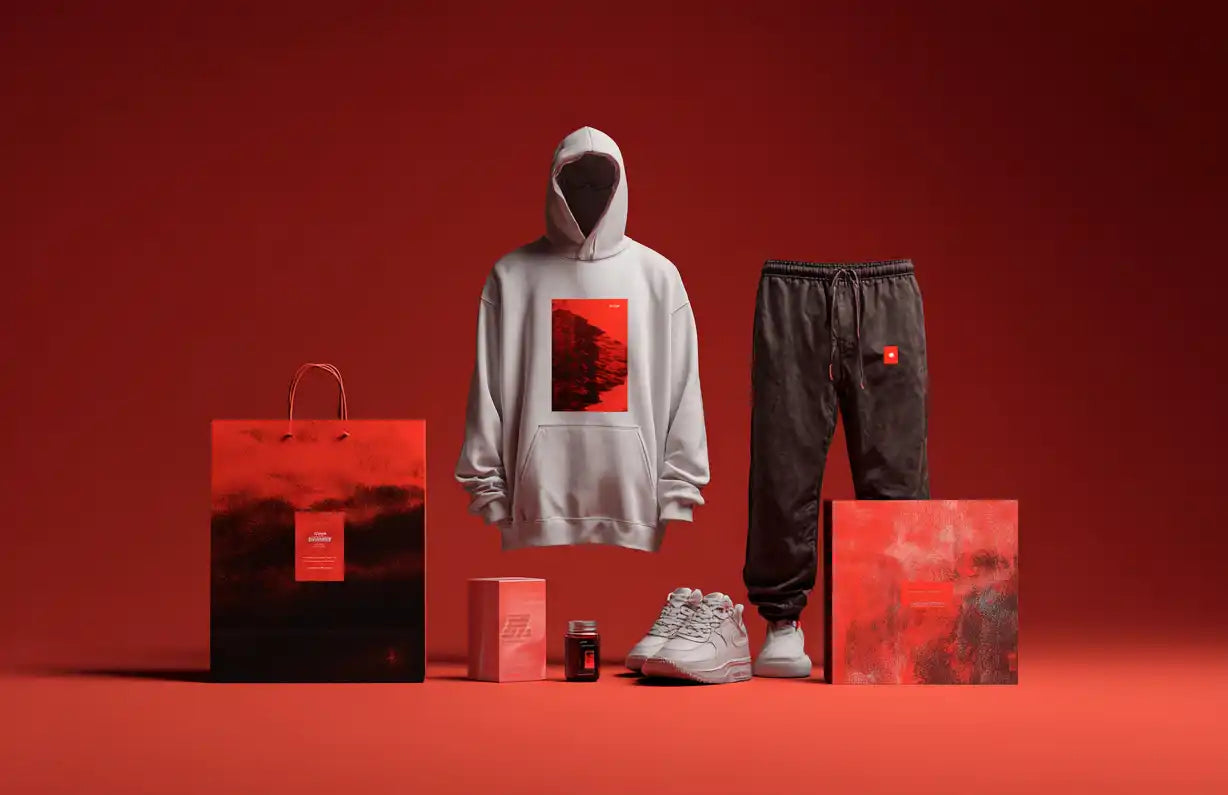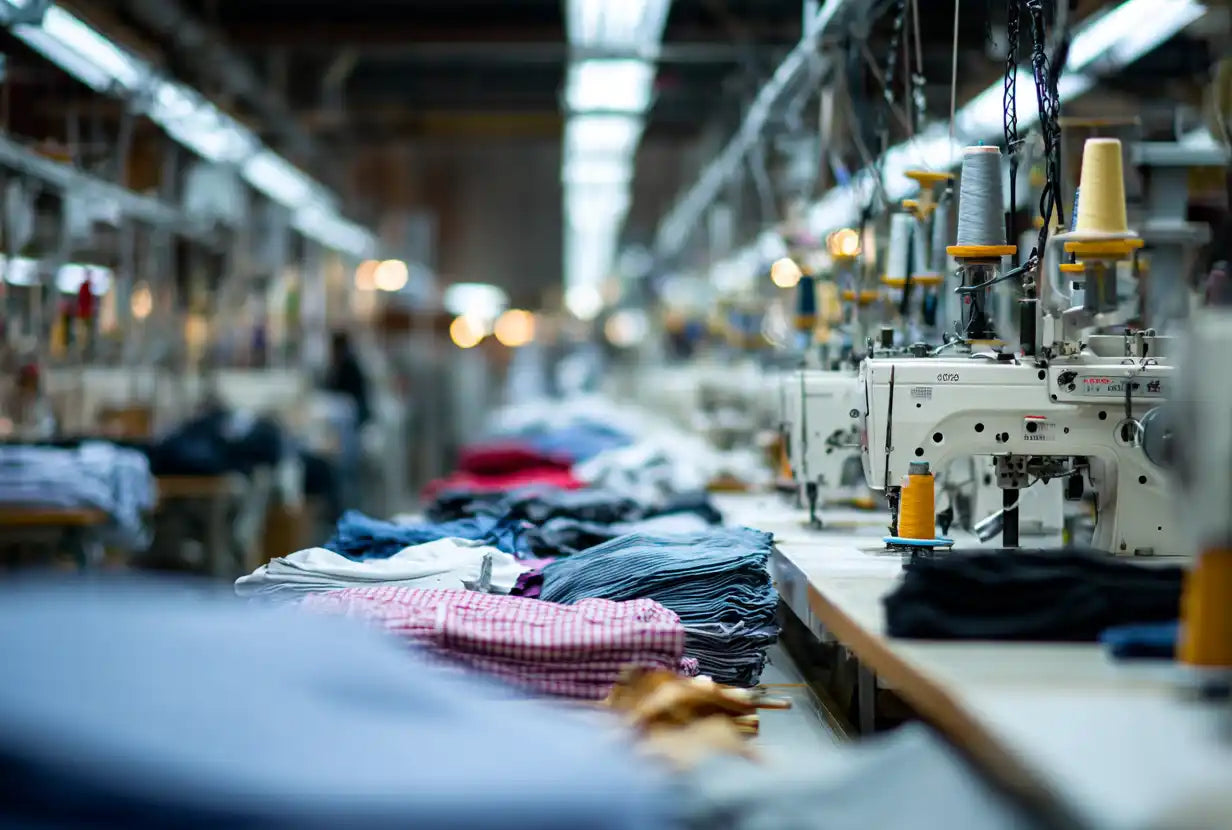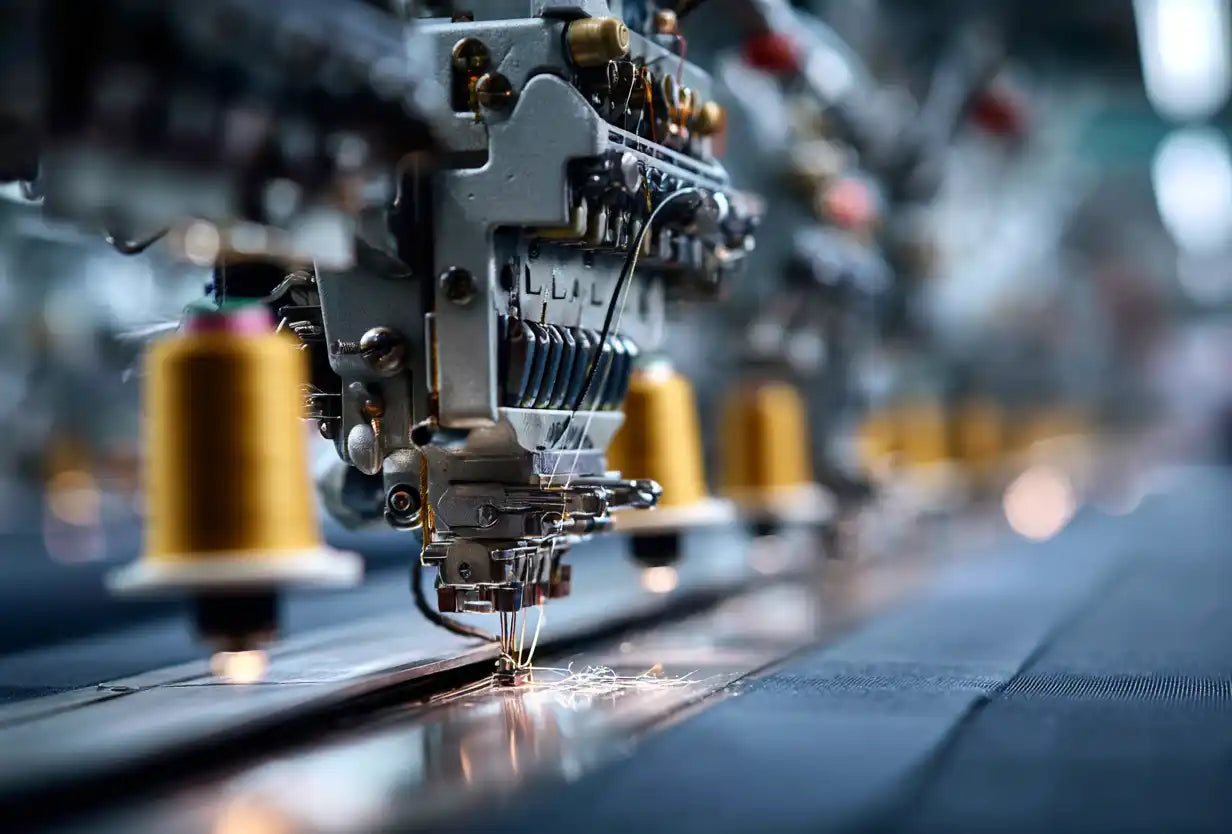The 2025 Leggings Fabric Landscape
Leggings remain the powerhouse of the athleisure market, projected to surpass $62B by 2028 (source: Grand View Research). For brand owners, choosing the right fabric mix is the single most critical decision for balancing performance, price point, and sustainability.
This guide provides a deep, 2025-ready analysis of the best fabrics for leggings, complete with GSM standards, blend recommendations, technical finishes, and sourcing tips — helping you design leggings that perform, last, and sell.
Top Fabrics for Leggings (2025 Edition)
1. Nylon (Polyamide)
Pros: Soft, silky hand feel, excellent drape, durable.
Cons: Costlier than polyester, can snag easily.
Best Use: Premium or luxury athleisure collections.
2025 Note: Consider bio-based nylon 6,6 for a lower carbon footprint.
2. Polyester
Pros: Cost-effective, colorfast, quick-drying.
Cons: Can pill, lower perceived luxury feel vs. nylon.
Best Use: Everyday leggings, budget-friendly lines.
2025 Innovation: Look for antimicrobial-treated polyester and rPET (recycled polyester) to meet sustainability demands.
3. Cotton (Organic or Blends)
Pros: Breathable, natural fiber, high comfort level.
Cons: Poor stretch recovery, can fade/shrink.
Best Use: Lounge and maternity leggings.
2025 Trend: Organic cotton + spandex blends for eco-conscious capsule collections.
4. Spandex (Elastane)
Pros: High elasticity, excellent shape retention.
Cons: Can degrade faster if not well cared for.
Blend Recommendation: Keep spandex at 15–25% for squat-proof compression.
5. Tencel™ (Lyocell) and Sorona®
Pros: Plant-based, biodegradable (Tencel), partially bio-based (Sorona), silky smooth.
Cons: Higher price point, requires careful sourcing.
Best Use: Premium sustainable collections.
2025 Trend: Brands are blending Tencel™ with nylon or polyester to create eco-performance hybrids.
6. Wool (Merino Blends)
Pros: Thermoregulating, naturally antimicrobial.
Cons: Expensive, niche audience.
Best Use: Outdoor winter leggings and cold-weather performance gear.
Technical Finishes & Knits That Matter
Fabric Finishes
- UPF Finish: Adds UV protection for outdoor athletes.
- DWR (Durable Water Repellent): Perfect for trail running or rainy conditions.
- Antimicrobial Coating: Reduces odor buildup, a must for performance wear.
Knit Construction
- Interlock Knit: Best for opacity, squat-proof leggings.
- Warp Knit: High compression, premium performance leggings.
Recommended GSM (Fabric Weight)
| Legging Type | Ideal GSM Range | Why It Works |
|---|---|---|
| Yoga/Studio | 180–220 GSM | Light, flexible, breathable |
| Training/Running | 220–250 GSM | Higher compression & squat-proof |
| Winter/Outdoor | 250+ GSM | Warmth, coverage, and durability |
Decision Table: Fabric Selection Made Easy
| Brand Goal | Recommended Fabric | Technical Add-Ons |
|---|---|---|
| Budget-Friendly Everyday Line | Polyester-Spandex Blend | Antimicrobial + Interlock Knit |
| Premium Luxury Collection | Nylon-Spandex Blend | Warp Knit + DWR Finish |
| Eco-Conscious Capsule | Tencel™/Sorona® Blend | OEKO-TEX® Certified Dyes |
| Cold Weather | Merino Wool Blend | Brushed Interior for Warmth |
Sustainability & Cost Comparison
Eco-Friendly vs Conventional Fabrics
| Fabric Type | Cost Premium | Environmental Benefit | Consumer Appeal |
|---|---|---|---|
| rPET (Recycled Polyester) | 15-25% | Reduces plastic waste | High |
| Organic Cotton | 20-40% | No synthetic pesticides | Medium-High |
| Tencel™ | 30-50% | Closed-loop production | High |
| Bio-based Nylon | 40-60% | Renewable raw materials | Medium |
Fabric Sourcing Timeline
Typical Lead Times by Fabric Type:
- Standard Polyester/Nylon: 2-4 weeks
- Custom Dye/Match: 4-6 weeks
- Sustainable Certified Fabrics: 6-8 weeks
- Technical Performance: 8-12 weeks
- Custom Knit Development: 12-16 weeks
Fabric Performance Testing Protocols
Essential Tests by Fabric Type
- All Fabrics: Squat-proof test, colorfastness, pilling resistance
- Nylon/Polyester: Snag resistance, UV degradation
- Cotton Blends: Shrinkage test, stretch recovery
- Sustainable Fabrics: Biodegradability, certification verification
- Performance Fabrics: Moisture wicking, compression retention
Industry Standard Tests
- Martindale abrasion (30,000+ cycles for premium)
- AATCC colorfastness to washing/crocking
- ASTM D2594 stretch and growth
- ISO 9073-4 tear strength
Care Instructions by Fabric Type
| Fabric | Washing | Drying | Special Notes |
|---|---|---|---|
| Nylon/Spandex | Cold, gentle cycle | Air dry preferred | Avoid fabric softeners |
| Polyester/Spandex | Cold wash | Low heat | Turn inside out |
| Cotton Blends | Warm water | Medium heat | May shrink initially |
| Tencel™ | Cold, delicate | Air dry only | No bleach |
| Wool Blends | Cold, wool cycle | Lay flat to dry | Use wool detergent |
Supplier Verification Checklist
- ✅ OEKO-TEX®, GRS, or bluesign® certifications
- ✅ Mill audit reports and compliance documentation
- ✅ Minimum 3 client references with similar projects
- ✅ Sample quality matches bulk production guarantee
- ✅ Transparent supply chain mapping
- ✅ Environmental compliance certificates
- ✅ Quality control protocols documentation
- ✅ MOQ flexibility and tiered pricing
Sourcing & Testing Tips
- Certifications: Look for OEKO-TEX®, GRS, or bluesign® suppliers.
- Testing: Perform squat-proof tests under studio lighting.
- Pilling & Abrasion: Request Martindale abrasion test reports.
- MOQ Negotiation: Many suppliers offer small MOQs for startups — don't overcommit on first runs.
Recommended Visual Content
Essential Images & Diagrams
- Fabric swatch comparison showing different textures
- GSM weight visual guide with fabric samples
- Knit construction diagrams (interlock vs warp knit)
- Performance test results visualization
- Sustainability certification infographic
- Care instruction icons for each fabric type
Frequently Asked Questions
What GSM is best for yoga leggings?
180-220 GSM is ideal for yoga leggings - light enough for flexibility and breathability, but thick enough for opacity during stretches and poses.
How much spandex do leggings need to be squat-proof?
15-25% spandex content provides optimal compression and recovery for squat-proof leggings. Below 15% may not provide enough tension, above 25% can reduce fabric durability.
What's the most durable legging fabric?
Nylon-spandex blends typically offer the best durability with high abrasion resistance. Look for nylon content of 75-85% with 15-25% spandex for maximum longevity.
Are sustainable legging fabrics less durable?
Not necessarily. Modern sustainable fabrics like rPET and Tencel™ can match or exceed conventional fabric durability when properly constructed and finished with technical treatments.
How do I test legging fabric quality?
Perform the squat test under bright lights, check stretch recovery, conduct multiple wash tests for colorfastness, and examine seam strength under tension.
What's the price difference between nylon and polyester leggings?
Nylon leggings typically cost 25-40% more than polyester equivalents due to raw material costs and manufacturing complexity, but offer superior softness and durability.
Pro Tip (Brand Owners)
Your first collection should include 1–2 core fabric blends tested across multiple GSM weights. This reduces risk, allows you to gather customer feedback, and avoids over-investment.
Conclusion & Next Steps
Choosing the right legging fabric requires balancing performance, cost, and sustainability. The optimal fabric blend depends on your target market, price point, and brand positioning.
Your Fabric Selection Action Plan:
- Define your primary use case (yoga, training, lounge) and target GSM range
- Select 2-3 fabric blends to test based on your brand positioning
- Request physical swatches and testing reports from multiple suppliers
- Conduct performance testing including squat tests and wash durability
- Start with small MOQs to validate fabric choice before scaling
- Develop clear care instructions based on your specific fabric blend
Remember: The right fabric choice impacts everything from customer satisfaction to return rates. Invest time in testing and validation to build a product that performs as promised and keeps customers coming back.
Ready to source? Download our complete fabric testing checklist and begin evaluating suppliers with confidence.

